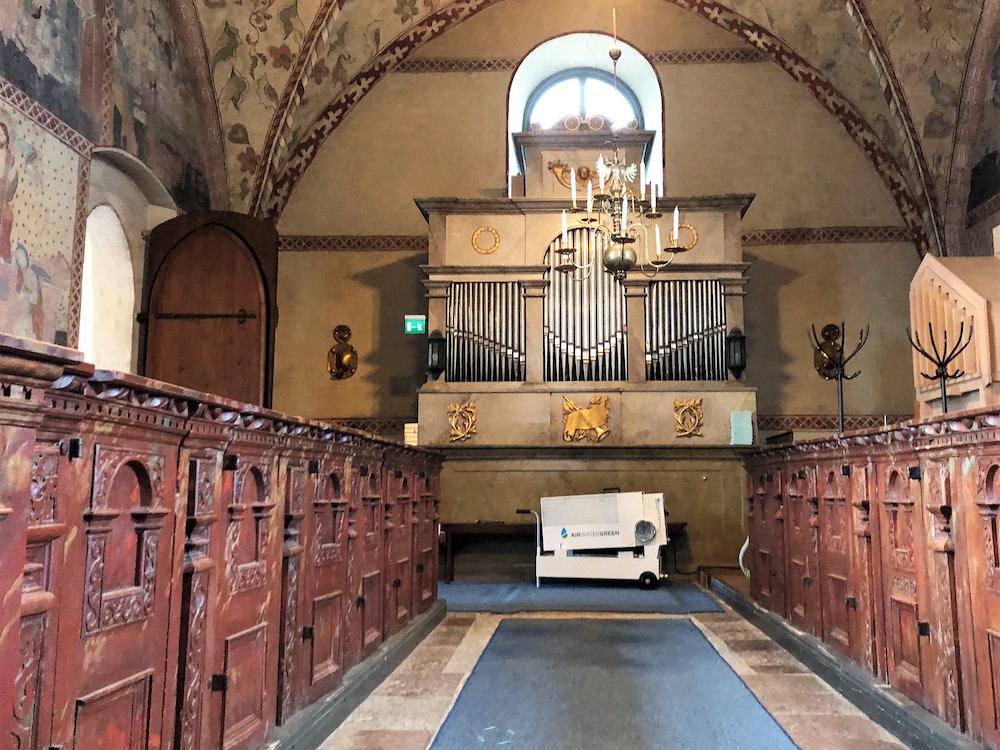In our ancient churches, where history and spirituality meet, maintaining a good indoor climate is not only a matter of preservation but also of well-being for both visitors and staff. The Diocese of Lund has therefore developed detailed recommendations for determining the optimum relative humidity (RH) in its church buildings, a guide aimed at protecting the structure, fixtures and fittings of the churches.
Background to the recommendations
With an understanding that each church building is unique, the need to create an indoor climate that takes into account the specific conditions of the building is emphasized. The document available for download replaces the previous requirement for specialist advice for the installation of dehumidifiers and provides general yet tailored guidance.
Relative humidity is a key measure in the recommendations. RH indicates how much moisture the air contains in relation to the maximum amount of moisture the air can contain without condensing. Understanding and controlling this measure is essential to avoid condensation and the problems that can arise from both too high and too low RF levels.
Challenges and solutions
High or low RH levels can lead to a range of problems, from mold growth and organ damage to wood cracking. The document therefore emphasizes the importance of keeping RF levels within specific ranges to prevent these challenges. Especially for church organs, there are additional requirements for consistent humidity and temperature to maintain the quality and function of the instruments.
Mould and its prevention
Mold is a common challenge in church buildings, and the recommendations point to the importance of keeping the RH below 70-75% to prevent mold growth. This is particularly important because mold growth can not only damage the building and its contents but also pose health risks.
Salts and lime paintings
Another important aspect that the document addresses is the management of salts in masonry. The salts, which can cause damage to plaster and paintings by dissolving and then crystallizing at different RH levels, need to be managed by keeping a relatively even RH level.
Conclusions and Recommendations
Ultimately, the aim of the recommendations is to provide guidance to enable the best possible protection and conservation of the church buildings of the Diocese of Lund. Following these guidelines can ensure that church rooms maintain an RH level of 56-68%, which is optimal to prevent the most common problems related to indoor climate.
More than 250 churches are equipped with an Airwatergreen solution.

